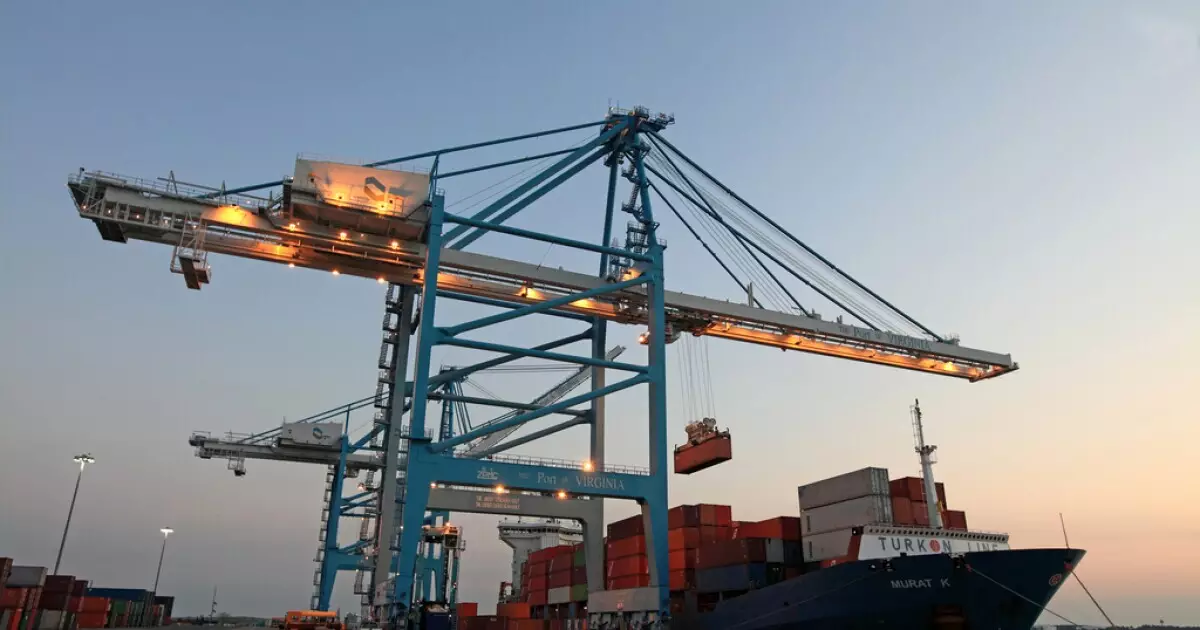The recent strike by longshoremen at East and Gulf Coast ports, which lasted less than three days, has brought both immediate relief and long-term implications for the affected ports. While the strike’s conclusion may alleviate some immediate credit concerns, the significant salary increases negotiated in the new agreement could have longer-lasting effects on the financial health of these vital maritime hubs.
The International Longshoremen’s Association (ILA), representing approximately 45,000 workers, successfully reached an agreement with the United States Maritime Alliance, putting an end to the disruption at 36 ports. The settlement included a striking 62% pay increase for dockworkers—an increase that far exceeds the association’s initial 50% offer and falls short of the union’s ambitious 77% demand. This adjustment, which also extends the existing contract until January 15, serves to prevent any immediate crippling effects on port operations due to labor disputes. Consequently, while the ports can now return to normalcy, the broader implications tied to restructured labor costs warrant a more nuanced exploration.
From a credit analysis perspective, experts had expected minimal immediate fallout from the strike due to the robust financial standing of the ports involved. Notably, Fitch Ratings has previously estimated the rated port debt in the U.S. to be between $30 and $32 billion, with most of that debt rated in the ‘A’ category or higher. This highlights a stability in financial structures that could mitigate the adverse impacts of the recent negotiations.
While the temporary cessation of operations alleviates immediate concerns, the 62% salary hike could present challenges for the financial viability of ports in the long run, particularly those that directly employ longshoremen rather than leasing facilities to terminal operators. Major operational ports, including the Port Authority of New York and New Jersey and the Port of Virginia, could see diminished margins as increased labor costs outweigh revenue gains. Kurt Forsgren, an analyst at S&P, emphasized this potential margin erosion, noting that ports may face a scenario where higher costs cannot be fully passed on to shippers or consumers.
Additionally, Fitch Ratings’ analysts maintain that while the rising payroll obligations might not be detrimental to credit quality in the immediate future, they pose a risk of increased operational expenses that could gradually impact debt service capabilities. Emma Griffith, a Fitch analyst, echoed this sentiment, indicating that any added costs would eventually trickle down to the shipping sector and, ultimately, consumers.
Historically, labor movements at West Coast ports have also resulted in higher wage settlements without substantially negative credit consequences, providing a frame of reference for understanding the current situation. For instance, a previous strike concluded with a 32% increase over six years, which did not drastically alter credit ratings for the involved port authorities. This trajectory suggests that while the current pay increase is noteworthy, it may not be as detrimental as initially feared.
Nathan Harris of Appleton Partners, Inc. noted that while the operating ports may witness some impact from wage increases, the influence on overall credit quality is expected to be modest. Harris additionally highlighted the importance of avoiding prolonged strikes, indicating that the swift resolution serves as a positive not only for the ports but also for the national economy.
The swift negotiation of the longshoremen’s strike allows U.S. ports to avoid immediate operational crippling; however, the ramifications of such a significant pay increase call for careful management moving forward. The ports must navigate the intricate balance between increasing labor costs and maintaining revenue streams to ensure sustained financial health. While analysts currently foresee a minor impact on credit ratings, the long-term management of these new obligations will be crucial as ports work through the delicate balance of operational efficiency and labor satisfaction in an ever-evolving economic landscape. As these ports brace themselves for a new chapter, the ongoing dialogue between workers, operators, and regulatory bodies will be essential in fostering resilient and mutually beneficial outcomes.

